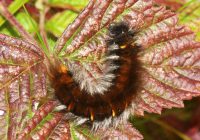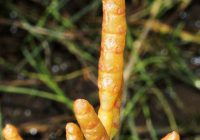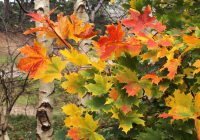Dr Phil Smith’s Wildlife Notes
October 2012
Further unsettled weather during the month accelerated the recovery of the sand-dune water-table, though visits to Devil’s Hole at Ravenmeols showed that it needs to rain a lot more before we get up to the levels of late winter 2008. Nevertheless, many of our dune slacks held water for the first time in several years and Wicks Lake at Formby Point began to live up to its name again.
The Devil’s Hole slack’s plant life is a constant source of interest, recent colonists including numerous baby willow bushes of several different kinds. I was thrilled to find amongst them a single shoot of the hybrid Salix × doniana, sometimes known as Don’s Willow, one of Britain’s rarest plants with only about 30 bushes recorded in the country. Earlier this year, I knew of 27 on the Sefton dunes but two near Lifeboat Road have died recently, for unknown reasons. However, the discovery of a new youngster at Lifeboat Road, together with the one at Devil’s Hole, restores our full complement of bushes. Also at Devil’s Hole were 15 saplings of another nationally rare hybrid willow, Salix × friesiana (no English name), known from only about ten British localities.
On rare sunny days during the month, flowering masses of Irish Ivy at Ravenmeols woods attracted hoards of insects, especially hover-flies and even dung-flies, their constant humming being audible from several metres away. Flashes of colour revealed up to nine Comma butterflies but, unlike 2011, Red Admirals were scarce this year. Walking through the nearby Ravenmeols dunes on 14th, Trevor Davenport and I counted 50 large hairy Fox Moth caterpillars over a distance of about 400m. They feed on Bramble or Creeping Willow before hibernating as mature caterpillars and, although not uncommon, I have never seen so many before in such a small area. In the past, these would have been a favourite food of the Cuckoo but, since that species is now almost extinct here, perhaps more of the caterpillars are surviving.
Patricia Lockwood joined me on 10th for visit to Marshside salt-marsh, our aim being to unravel the various Glassworts which are notoriously tricky to identify. In particular, we hoped to find the uncommon Yellow Glasswort (Salicornia fragilis). After a good deal of slogging across the mud-flats, disturbing 19 Little Egrets in the process, we found what seemed to be the target, photographs later being confirmed by two national experts. The commonest species at Marshside is Purple Glasswort (S. ramosissima), the inner salt-marsh being suffused bright red by its abundance. Autumn colours were also evident, as usual, in the Formby Point woodlands, with Norway Maple being a candidate for the brightest of all.
Despite cool conditions, a few dragonflies survived late into the month, including two Migrant Hawkers and a Common Darter at Marshside on 21st, while I also recorded the latter species on Ainsdale dunes on 27th.
A spectacular flight of Pink-footed Geese over my home on 19th prompted a visit to the nearby Downholland Moss the following day. Sure enough, I soon found a flock of about 4000 feeding on a stubble field right next to the road. With them was a Barnacle and a Greylag goose. Martin Mere also attracted a large influx of geese during the month, peaking at about 15,000. Fellow travellers here included Barnacles, three Tundra Beans, Russian Whitefront, Pale-bellied Brent and a Canada Goose of one of the small Arctic races. Also reported at Martin Mere were two late Avocets, a Bittern, Brambling and Firecrest, while an impressive list of raptors was headed by a Red Kite on 4th. All the way from Siberia, a tiny Yellow-browed Warbler was seen at Marshside from 4th to 7th while another, or perhaps the same bird, turned up in a Birkdale tit flock on 20th and 21st.




